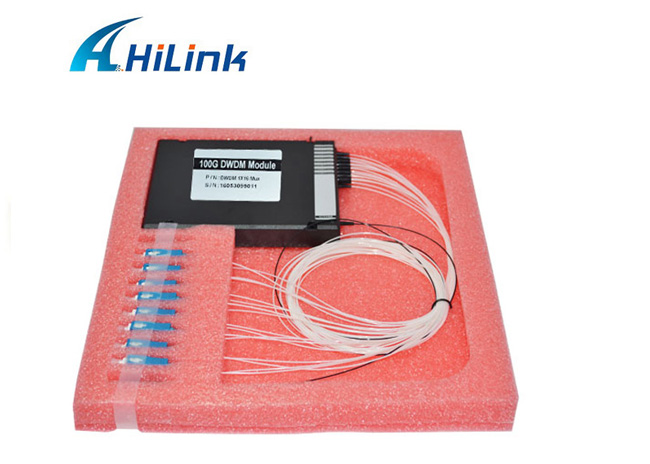Advantages and Disadvantages of Passive DWDM System
Sep. 21, 2022
Dense Wavelength Division Multiplexing (DWDM) is a Wavelength Division Multiplexing (WDM) technology that extends the transmission capacity of existing fiber optic networks. It can multiplex multiple optical carrier signals into a single fiber for transmission, which can save a lot of fiber resources in long distance transmission applications. There are two main types of DWDM systems: passive DWDM systems and active DWDM systems.
Passive DWDM System
Passive DWDM systems do not use active devices such as fiber amplifiers and dispersion compensators. The transmission distance of such systems is limited by the transmit power of optical modules, but they have the advantage of high channel capacity and are mainly used in metropolitan networks and high-speed transmission lines with high channel capacity.
Active DWDM System
Active DWDM is a system that contains a transponder, which serves to perform optical-electrical-optical (OEO) conversion. In addition, multiple erbium-doped fiber amplifiers (EDFAs) are installed in this system to ensure that the receiving end receives high-quality optical signals, but the number of EDFAs is limited by the type of fiber, number of wavelength channels, transmission rate, signal-to-noise ratio (OSNR), and other factors.
The link length of an active DWDM system is not only related to the number of fiber amplifiers and signal-to-noise ratio (OSNR) but is also affected by the dispersion of the optical signal. Therefore, when designing an active DWDM system, the dispersion of the optical signal should be taken into account, and if necessary, a dispersion compensator (DCM) can be added to the active DWDM system. It should be noted that the dispersion compensator (DCM) will increase the insertion loss of the fiber link, which will also have an impact on the transmission distance of the active DWDM system.
Passive DWDM system and active DWDM system have their own advantages and disadvantages, and this part will introduce them in detail respectively.

Passive DWDM System vs Active DWDM System
Advantages and disadvantages of passive DWDM system
Cost savings: Compared with active DWDM backbone networks with fiber amplifiers and dispersion compensators, passive DWDM can build high-speed transmission lines with high channel capacity at a lower cost.
Easy to use: Passive DWDM is a plug-and-play system that is both simple and easy to use. However, passive DWDM systems also have shortcomings in the following areas.
Scalability: Passive DWDM systems have a limited number of wavelength channels, and if you want to expand the network, you must use more passive DWDM devices, which will increase the difficulty of managing the system.
Pros and cons of active DWDM system
Active DWDM systems support a larger number of wavelength channels, resulting in greater bandwidth and higher fiber utilization. In addition, active DWDM systems are easier to manage, as users can adjust channel wavelengths online without shutting down the system, and active DWDM systems are easier to expand.
Compared with passive DWDM systems, active DWDM systems have longer transmission distances and higher deployment costs. In addition, active DWDM systems also use fiber amplifiers, dispersion compensators and other equipment, and their deployment is more complex than passive DWDM systems.
FILTERS OF DWDM ABS BOX
Hilink DWDM MUX DEMUX Modules with 100GHz/200GHz channel spacing can be used to combine or separate wavelength channels at the standard ITU grid. The DWDM modules passively multiplex the optical signal outputs from 4 or more optical transceivers, send them over a single optical fiber, and then de-multiplex the signals into separate, distinct signals for input into electronic devices at the other end of the fiber optics.











